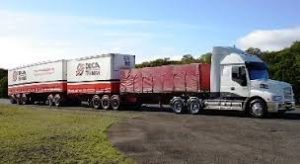
The Coalition Against Bigger Trucks says one thing about the condition of bridges in Oklahoma. Governor Kevin Stitt and the Oklahoma Department of Transportation say another.
In a recent release, the CABT stated that Oklahoma is home to the nation’s third-highest percentage of bridges in poor condition. And it cited data published by the Federal Highway Administration.
The CABT said it is why some local officials in Oklahoma recently joined more than 1,000 others nationally in sending a letter to congress opposing any increases in truck size or weight including longer double-trailer trucks and heavier single-trailer trucks.
But as OK Energy Today reported in April, Gov. Kevin Stitt attended his first meeting of the Oklahoma Transportation Commission and congratulated the Department of Transportation for addressing bridge problems. He also noted that Oklahoma’s bridges on the highway system are finally “nearing the top of the list for the best in the nation.”
The governor also pointed out that ODOT recently identified 132 or less than two percent of the 6,800 total bridges on the highway system were rated structurally deficient or poor.
“Like so many rural communities, my county is hard pressed to find the next nickel to keep up with our road and bridge maintenance,” said Cleveland County Commissioner Rod Cleveland in the release from the Coalition Against Bigger Trucks. “Let me be clear, we’re nowhere close to being able to keep up now, but bigger trucks would incur such incredible infrastructure costs that I don’t see how we’d recover.”
Iowa leads the nation in the highest number of bad bridges, with 4,675 of that state’s bridges in poor condition. Pennsylvania ranks No. 2 in bad bridges, followed by Oklahoma, according to the National Bridge Inventory, while Illinois and Missouri round out the Top 5.
“We need more support for infrastructure, not more burden,” said Mr. Cleveland, “Perhaps some leaders in Washington should consider riding through a few of their local communities on uneven pavements and crumbled bridge decks, and then reconsider this bigger-truck fiasco.”
Companies leading bigger-truck coalitions are (1) Anheuser-Busch lobbying Congress for heavier tractor-trailers, and (2) Amazon, FedEx and UPS pushing Congress for longer double-trailer trucks.
The federal government has recommended against increasing the size and weight of trucks. The U.S. Department of Transportation (USDOT) studied truck size and weight laws over three years and in 2016 delivered its report to Congress, which recommended against any such increases and did not recommend any pilot projects. The USDOT study found that thousands of Interstate and other National Highway System bridges would not be able to accommodate longer or heavier trucks, costing billions of dollars in additional bridge costs.






